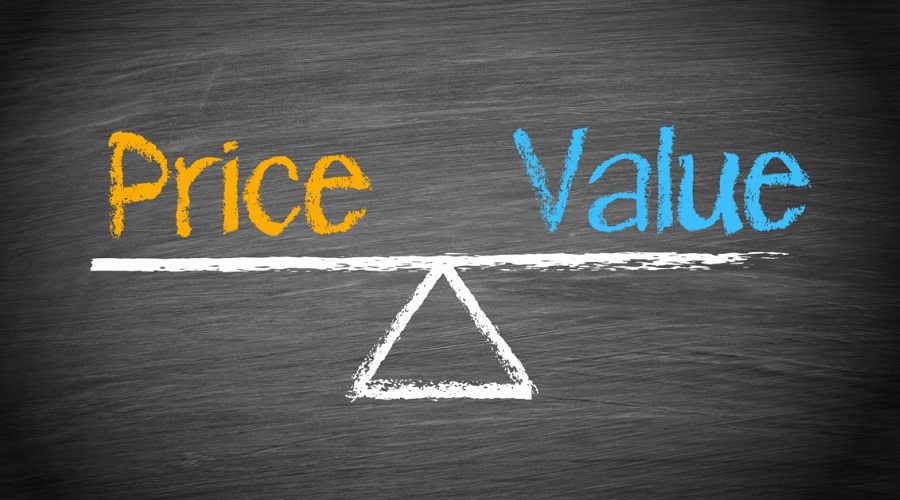Deciding how to price a product can mean the difference between success and failure for your small business. Pricing strategies are a mix of art and science. Deciding what your product should cost or choosing a pricing strategy can be a little intimidating especially for new business owners.
Ask people to pay too much for your product or service and they will stop buying; ask too little and your profit margin slides or customers assume your product is poor quality.
How do you choose your prices? Do you look at competitors’ prices and chose a comparable price, or do you aim lower? Do you factor in labor, materials, and profit? Do you keep your prices low because you are afraid of pricing higher will mean selling less?
In this post, we’ll explore the tips and tricks of product pricing for small businesses.
Also Read: How to Grow Your Side Hustle into a Successful Business.
How to price your product right way.
While customers won’t purchase goods that are priced too high, your business won’t succeed if it prices goods too low to cover all of the business’ costs. Along with product, place, and promotion, price can have a profound effect on the success of your small business.
1. Know your costs.
A fundamental tenet of pricing is that you need to cover your costs and then factor in a profit. That means you have to know how much your product costs. You also have to understand how much you need to mark up the product and how many you need to sell to turn a profit. Remember that the cost of a product is more than the literal cost of the item; it also includes overhead costs.
2. Know your customers.
Aside from knowing your costs, you also need to find out how much your potential customers are willing to pay. You can determine this figure by looking into how much they are paying for competing products and services similar to yours. Simply matching a price is dangerous, though you need to be sure all your costs both direct and indirect are covered.
3. Know your competition.
The fastest way to have a rough estimate of what your product pricing should be is to look closely at the competition. Are the products offered comparable to yours? What pricing strategy are they using? What additional value are they offering to customers? Looking into this questions will give you a clear picture of what your pricing model should look like.
4. Understand the market.
Clearly, you can’t be a soothsayer, but you can keep track of outside factors that will impact the demand for your product in the future. Both internal (organizational) and external (market) factors affect the price of a product. Economists talk about market conditions (pure competition, monopolistic competition, pure monopoly, and oligopoly) being some of the major factors when it comes to product pricing.
5. Choose a pricing strategy.
Cost-plus pricing involves adding a markup percentage to costs; this will vary between products, businesses, and sectors. Value-based pricing is determined by how much value your customers attach to your product. Decide which approach is most suitable for your products before making a calculation.
How to choose a pricing strategy?
Pricing strategy refers to method businesses use to price their products or services.
Almost all businesses, large and small, base the price of their products and services on production, labor, and advertising expenses and then add on a certain percentage so they can make a profit.
Developing a pricing strategy is a complex business exercise. A pricing strategy takes into account segments, ability to pay, market conditions, competitor actions, trade margins and input costs, amongst others. It is targeted at the defined customers and against competitors.
You should choose a pricing strategy that ultimately meets your pricing objectives. The price can be set to maximize profitability for each product sold or it can be used to defend an existing market from new entrants, to increase market share within a market or to enter a new market.
1. Absorption Pricing.
This is a method of pricing in which all costs are recovered. The price of the product includes the variable cost of each item plus a proportionate amount of the fixed costs.
2. Cost-plus Pricing.
Under this approach, the direct material cost, direct labor cost, and overhead costs for a product are added up and added to a markup percentage (to create a profit margin) in order to derive the price of the product.
3. Freemium Pricing.
Freemium is a revenue model that works by offering a product or service free of charge while charging a premium for advanced features, functionality, or related products and services.
4. Premium Pricing.
Premium pricing is the practice of keeping the price of a product or service artificially high in order to encourage favorable perceptions among buyers, based solely on the price.
5. Competitive Pricing.
Competitive pricing is generally used in a very competitive market. If all your competitors are charging $100 for a replacement windshield, for example, that’s what you should charge.
Also Read: 4 unique ways to increase revenue for your small business.
Conclusion
A business can use a variety of pricing strategies when selling a product or service. The price can be set to maximize profitability for each unit sold or from the market overall. Having a good pricing strategy helps you determine the price point at which you can maximize profits on sales of your products or services.
Pricing your product integrates the economics of your business and the psychology of your customers. Employing simple market research and competitor analysis will help you find your pricing sweet spot. Businesses must be attentive to their opponent’s actions in order to have the comparative advantage in the market.
Follow us on Twitter or visit our Facebook page for more small business resources like this.

